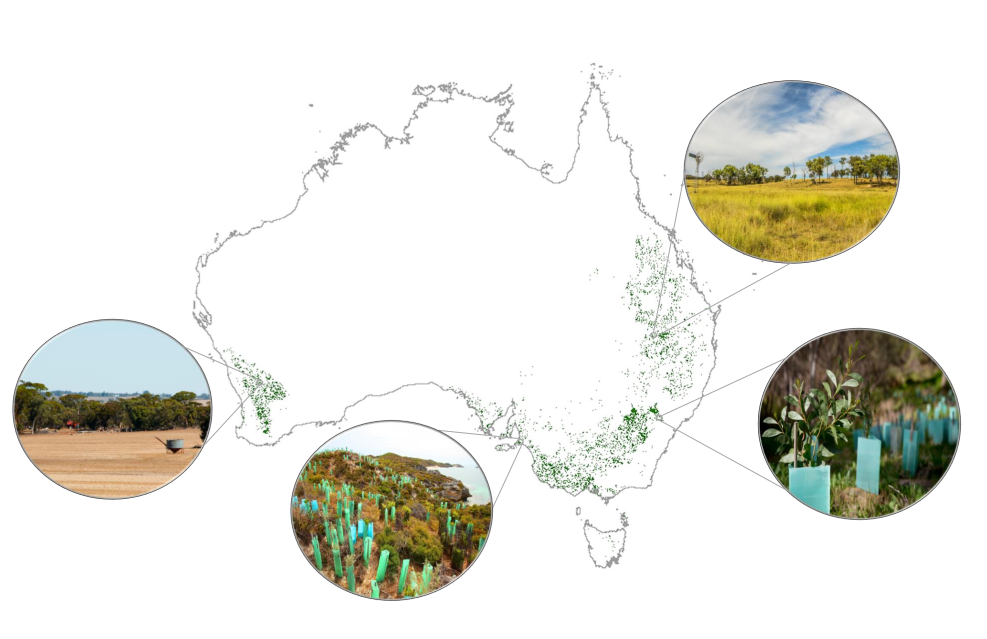A national plan to restore habitat on marginal farming land would fight climate change, prevent species loss and put money in farmers' pockets, according to a team of University of Queensland-led scientists
The team said its proposal would cost 0.1 per cent of GDP each year, restore habitat and meet one-sixth of Australia's Nationally Determined Contributions under the Paris Climate Agreement.
UQ PhD candidate Bonnie Mappin said the incentivised program would also put cash into the hands of willing farmers via stewardship payments.
"This plan is a win-win for the environment and rural communities," Ms Mappin said.
"We've outlined a pathway to achieve 30 per cent native vegetation coverage of almost all of Australia's degraded terrestrial ecosystems on marginal farming land.
"Marginal land is ripe for revegetation.
"Farmers could continue to produce valuable crops on prime land, while rebuilding our environment and sequestering carbon.
Ms Mappin said the plan's carbon pricing scenario - which fits current trends - would ensure the program would pay for itself.
"We estimate that this restoration would cost approximately AU$2 billion annually over 30 years, or a net present value of $41 billion for the life of the project," she said.
 "The cost would be offset by the expected carbon revenue of AU$12 to $46 billion.
"The cost would be offset by the expected carbon revenue of AU$12 to $46 billion.
"We estimate this would achieve 16 per cent of the greenhouse gas emission reduction of Australia's Nationally Determined Contributions by 2030 for commitments to the Paris Climate Agreement."
Co-Author Professor Lesley Hughes, a founding Councillor with the Climate Council of Australia and a Director for WWF Australia, said the plan was critical, given that the health and diversity of Australian ecosystems are in decline.
"Our environment is under mounting pressure from land clearing, altered fire regimes and invasive species," Professor Hughes said.
"Australian ecosystems are also extremely vulnerable to climate impacts with extreme temperatures and fires expected to become more frequent and more severe.
"Australia's environmental legislation and policies have failed to tackle these mounting issues and there is a lack of adequate funding for environmental management, threatened species protection and ecological restoration.
"Restoration of native vegetation on marginal lands has enormous co-benefits for Australian biodiversity by improving habitat and the ecosystem services our species provide, and supporting jobs, especially in rural and regional communities."
The research has been published in the Journal of Applied Ecology (DOI: 10.1111/1365-2664.14008).
Image above left: Cost-effective restoration sites in heavily degraded ecosystems across Australia, with examples of possible restoration sites or landscapes.






